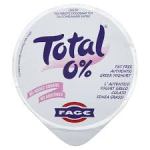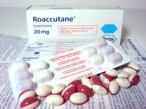M y middle daughter, Evie (7), has serious issues with gluten (and oats!). She’s tested negative for coeliac disease, but if she has even a small amount food of bread, cake or pasta she will be doubled up in pain a few hours later. As for many people with gut issues, stress and worry are also a major factor in making the problem worse. She desperately misses London since we had to move to N. Ireland 8 months ago: our
y middle daughter, Evie (7), has serious issues with gluten (and oats!). She’s tested negative for coeliac disease, but if she has even a small amount food of bread, cake or pasta she will be doubled up in pain a few hours later. As for many people with gut issues, stress and worry are also a major factor in making the problem worse. She desperately misses London since we had to move to N. Ireland 8 months ago: our
house, her school, her friends, and most of all her Dad who still lives there.
It’s lucky that I’m a dietitian, as I’m well used to managing patients with coeliac disease and non-coeliac gluten sensitivity, but practically it can be tough to avoid gluten. Birthday parties are notoriously difficult to negotiate (what kid can’t resist a tiny bit of cake!). The availability of gluten free foods is a million times better than 10 years ago, but they can be expensive and often loaded with sugar. I like making as much of my family’s food as possible, and this bread is fab for her……….the flaxseed is brilliant for gut health and constipation, and the eggs and almonds provide terrific sources of protein. And very importantly, it’s so easy.
If you are watching your carbohydrate intake, needing gluten free, or simply want a highly nutritious healthy bread, then I highly recommend this very easy ecipe. For anyone who has tried Irish wheaten bread, this has a very similar texture.
Flaxseeds for dietary fiber, manganese, vitamin B1, and omega-3 healthy fats. Almonds are a source of vitamin E, copper, magnesium, and high quality protein, fiber, and phytosterols. Eggs are a very good source of high quality protein, vitamin B2, selenium, B6, B12 and minerals such as zinc, iron and copper, fat soluble vitamins A, D, E and K.
There is about 1000 kcal, 54g protein, 5g carbs in the whole loaf. So if you cut 6 slices, that’s about 170kcal per slice.
Ingredients:
Ground flaxseed – 1 cup
Ground almonds – 1/2 cup
Eggs – 4
Baking powder – 1 teaspoon
Method:
1) Beat together eggs & 3 tablespoons of water
2) Mix dry ingredients in a separate bowl: 1 cup ground flaxseed , 1 teaspoon baking powder, 1/2 cup ground almonds
, 1 teaspoon baking powder, 1/2 cup ground almonds
3) Add wet ingredients to the dry ingredients, mix well. Put in a loaf tin, cook for 20 minutes at 200 degrees C.



 High in healthy fats and protein, low carbs.
High in healthy fats and protein, low carbs.













 local Thai supermarket, and certainly don’t have the funds to make Wholefoods my local. Chia seeds are all very well, but excruciatingly expensive (£20/kg), and wholegrain rice is almost as nutritious (£1/kg). The scientific evidence shows, that what you feed your children has a fundamental effect on their development and health. However, I can achieve this from my local supermarket, with a shopping list that I won’t have to remortgage the house for.
local Thai supermarket, and certainly don’t have the funds to make Wholefoods my local. Chia seeds are all very well, but excruciatingly expensive (£20/kg), and wholegrain rice is almost as nutritious (£1/kg). The scientific evidence shows, that what you feed your children has a fundamental effect on their development and health. However, I can achieve this from my local supermarket, with a shopping list that I won’t have to remortgage the house for.

 he tooth fairy. And the Incredible Hulk just LOVES broccoli, don’t you know? I never make them clear their plate, I’m happy if they have made a decent effort, and aren’t messing about at the table.
he tooth fairy. And the Incredible Hulk just LOVES broccoli, don’t you know? I never make them clear their plate, I’m happy if they have made a decent effort, and aren’t messing about at the table.


